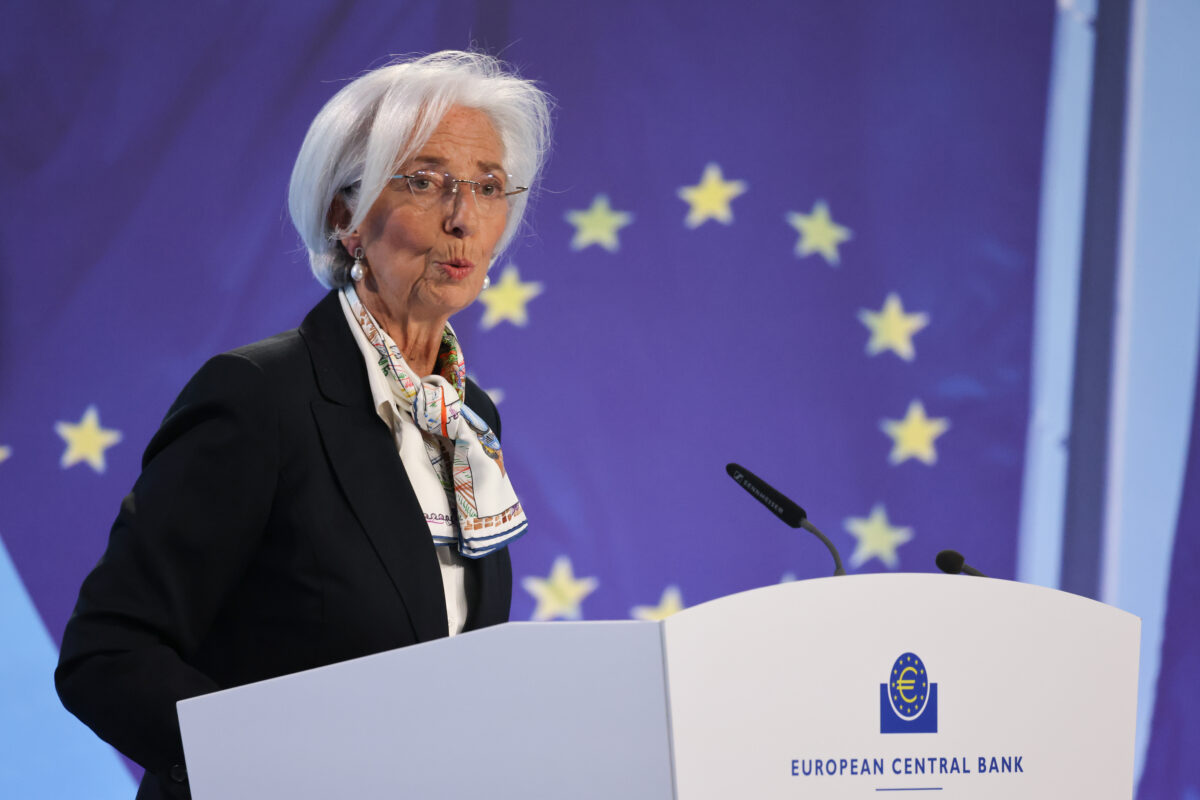Die US-Notenbank Fed senkt die Zinsen um 100 Basispunkte und stellt in einer koordinierten Aktion mit den großen Notenbanken faktisch unbegrenzt Dollar-Liquidität zur Verfügung durch Swap-Linien. Das bedeutet: den Notenbanken wird von der Fed faktisch unbegrenzte Dollar-Liquidität zur Verfügung! Dazu kauft die Fed für 500 Milliarden Dollar US-Staatsanleihen und für 200 Milliarden Dollar Mortgage Backed Securities (MBS):
„The coronavirus outbreak has harmed communities and disrupted economic activity in many countries, including the United States. Global financial conditions have also been significantly affected. Available economic data show that the U.S. economy came into this challenging period on a strong footing. Information received since the Federal Open Market Committee met in January indicates that the labor market remained strong through February and economic activity rose at a moderate rate. Job gains have been solid, on average, in recent months, and the unemployment rate has remained low. Although household spending rose at a moderate pace, business fixed investment and exports remained weak. More recently, the energy sector has come under stress. On a 12‑month basis, overall inflation and inflation for items other than food and energy are running below 2 percent. Market-based measures of inflation compensation have declined; survey-based measures of longer-term inflation expectations are little changed.
Consistent with its statutory mandate, the Committee seeks to foster maximum employment and price stability. The effects of the coronavirus will weigh on economic activity in the near term and pose risks to the economic outlook. In light of these developments, the Committee decided to lower the target range for the federal funds rate to 0 to 1/4 percent. The Committee expects to maintain this target range until it is confident that the economy has weathered recent events and is on track to achieve its maximum employment and price stability goals. This action will help support economic activity, strong labor market conditions, and inflation returning to the Committee’s symmetric 2 percent objective.
The Committee will continue to monitor the implications of incoming information for the economic outlook, including information related to public health, as well as global developments and muted inflation pressures, and will use its tools and act as appropriate to support the economy. In determining the timing and size of future adjustments to the stance of monetary policy, the Committee will assess realized and expected economic conditions relative to its maximum employment objective and its symmetric 2 percent inflation objective. This assessment will take into account a wide range of information, including measures of labor market conditions, indicators of inflation pressures and inflation expectations, and readings on financial and international developments.
The Federal Reserve is prepared to use its full range of tools to support the flow of credit to households and businesses and thereby promote its maximum employment and price stability goals. To support the smooth functioning of markets for Treasury securities and agency mortgage-backed securities that are central to the flow of credit to households and businesses, over coming months the Committee will increase its holdings of Treasury securities by at least $500 billion and its holdings of agency mortgage-backed securities by at least $200 billion. The Committee will also reinvest all principal payments from the Federal Reserve’s holdings of agency debt and agency mortgage-backed securities in agency mortgage-backed securities. In addition, the Open Market Desk has recently expanded its overnight and term repurchase agreement operations. The Committee will continue to closely monitor market conditions and is prepared to adjust its plans as appropriate.
Voting for the monetary policy action were Jerome H. Powell, Chair; John C. Williams, Vice Chair; Michelle W. Bowman; Lael Brainard; Richard H. Clarida; Patrick Harker; Robert S. Kaplan; Neel Kashkari; and Randal K. Quarles. Voting against this action was Loretta J. Mester, who was fully supportive of all of the actions taken to promote the smooth functioning of markets and the flow of credit to households and businesses but preferred to reduce the target range for the federal funds rate to 1/2 to 3/4 percent at this meeting.
In a related set of actions to support the credit needs of households and businesses, the Federal Reserve announced measures related to the discount window, intraday credit, bank capital and liquidity buffers, reserve requirements, and—in coordination with other central banks—the U.S. dollar liquidity swap line arrangements. More information can be found on the Federal Reserve Board’s website.“
Koordinierte Aktion der Fed, der EZB, der Bank of Canada, der Schweizer Nationalbank sowie der Bank of Japan für Swap-Linien – ergo: unbegrenzte Liquidität für Dollar-Bedarf. Das gab es zuletzt in der Finanzkrise – die Fed rettete damals die europäischen Banken (die gewissermaßen in London eine Art off-shore Dollar-Maekt etabliert hatten, der zu kolabieren drohte:
„Coordinated Central Bank Action to Enhance the Provision of U.S. Dollar Liquidity
The Bank of Canada, the Bank of England, the Bank of Japan, the European Central Bank, the Federal Reserve, and the Swiss National Bank are today announcing a coordinated action to enhance the provision of liquidity via the standing U.S. dollar liquidity swap line arrangements.
These central banks have agreed to lower the pricing on the standing U.S. dollar liquidity swap arrangements by 25 basis points, so that the new rate will be the U.S. dollar overnight index swap (OIS) rate plus 25 basis points. To increase the swap lines‘ effectiveness in providing term liquidity, the foreign central banks with regular U.S. dollar liquidity operations have also agreed to begin offering U.S. dollars weekly in each jurisdiction with an 84-day maturity, in addition to the 1-week maturity operations currently offered. These changes will take effect with the next scheduled operations during the week of March 16.1 The new pricing and maturity offerings will remain in place as long as appropriate to support the smooth functioning of U.S. dollar funding markets.
The swap lines are available standing facilities and serve as an important liquidity backstop to ease strains in global funding markets, thereby helping to mitigate the effects of such strains on the supply of credit to households and businesses, both domestically and abroad.“
Kommentare lesen und schreiben, hier klicken













Das ist definitiv Panik! Wenn diese Maßnahmen nicht ausreichen um die Märkte zu beruhigen, dann ist sicher das wir vor einem sehr großen Problem stehen was das Finanzsystem betrifft. Globale Swap Lines könnten durchaus effektiver sein als die Repo Geschäfte, aber wenn sich der Repo Markt dann nicht beruhigt, Gute Nacht.
Die Futures schon mal gleich tief im Keller, zumindest nach den Kursen die ich habe.
Ich schrieb es ja schon oft – die Notenbanken können nichts mehr ausrichten. Sie haben keine Macht mehr. Auch die letzten Zinssenkungen brachten nur noch etwas in der Scheinwelt derer, die an die Allmacht der Notenbanken glauben. Wirtschaft funktioniert so nicht. Billiges Geld lässt die Starken faul werden und die Schwachen glauben, sie seien stark. Aber am dümmsten ist es, Schulden mit immer neuen und noch höheren Schulden zu begleichen. Das ist wirklich im wahrsten Sinne des Wortes saudumm.
Hoffentlich dauert es nicht mehr lange, bis wir von dieser korrupten und nur dem eigenen Machterhalt verpflichteten Finanz- und Politikerkaste befreit werden. Bis zum Ende des Finanzsystems werden sich die Ungleichgewichte leider weiter und noch schneller erhöhen. Zunächst werden auch die Reichen viel Geld verlieren (es sei denn, sie waren Bären). Das Schlimme ist aber, dass die Reichen nach einer Staatspleite immer noch reich sind und sich dann zu Schnäppchenpreisen mit den Sachwerten eindecken, die die Nichtreichen verloren haben. Nach einem Neustart sind dann die Reichen schon nach wenigen Jahren noch reicher als vorher, während die Nichtreichen wieder jahrzehntelang hart arbeiten müssen, um zu altem Wohnstand zu kommen.